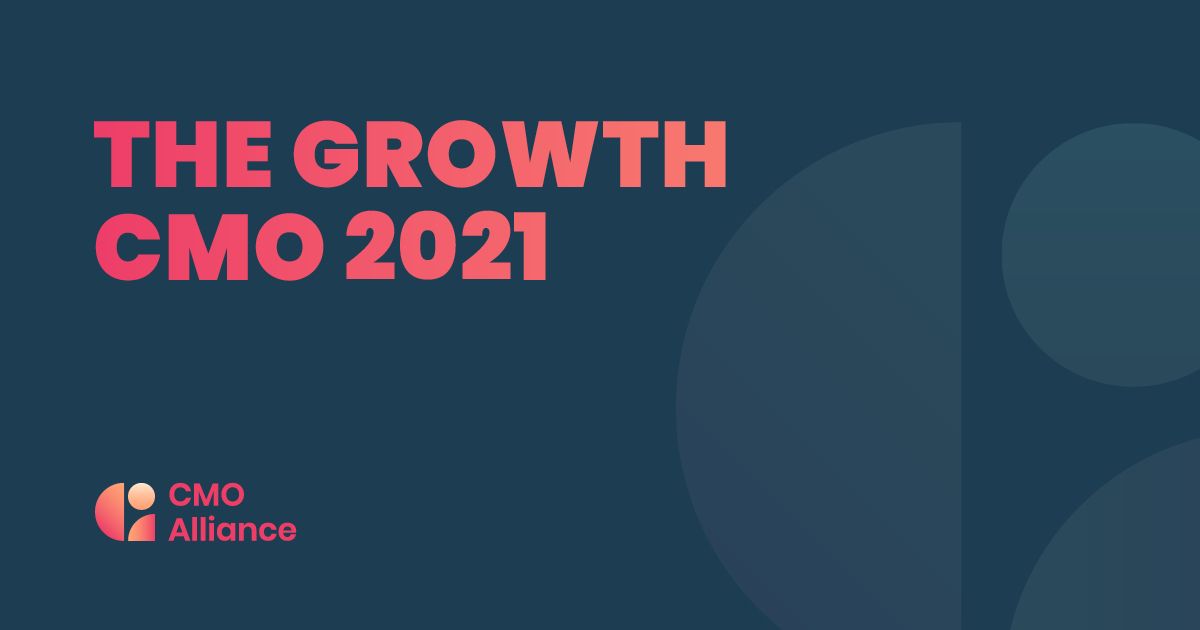It’s difficult to do any kind of marketing these days without a solid array of martech, and it’s usually the responsibility of CMOs to build and maintain tech stacks for their marketing departments.
This comes with many challenges. You have to identify the problems that require tech solutions, find the right solution that can satisfy that problem for the right cost, ensure it can be integrated appropriately into your tech stack (and often the tech stacks of other departments), and ensure the people who are using the tech (whether it’s you or your team) know how to use it properly.
And this is a process that’s unlikely to end. As your organization grows and evolves, so will its demands on the marketing department, and your tech stack needs to evolve in kind. In fact, 61.9% of CMOs believe they have gaps in their current tech stacks.
Most CMOs will develop their own approaches to building their tech stacks. You might always be chasing the next big thing, stick to tried-and-tested methods, or even try to strike a balance between the two. Regardless, it pays to think long and hard about the role and function of tech in your marketing department.
In this guide, you’ll find advice and insights on how to think about tech stacks as a CMO, based on the experiences of CMOs.
- What tools should you be prioritizing in a marketing tech stack?
- Marketing tech stacks for remote teams
- Understanding and using your marketing tech stack
- Assessing your tech stack choices
- Advanced marketing tech stacks: AI applications and machine learning
- Is managing tech stacks your entire job as a CMO?
What tools should you be prioritizing in a marketing tech stack?
In our recent Growth CMO Report, we asked CMOs to identify the most important tools in their tech stacks that allowed them to meet their growth goals. The most commonly cited by 50% of CMOs was a dedicated CRM system, followed by data analytics tools (28.13%), with other popular tool types being data modeling, email platforms, and LinkedIn Sales Navigator.
However, just because there are certain tools that are a priority, that doesn’t mean you can operate with just them. Marketing tech stacks need different components working in cohesion with another.
As Ionut Danifeld, CMO of TRAPO Asia, explains when describing his approach to building a marketing tech stack:
“Each time I was searching for a new tool to come into the place, it meant that every single tool needs to be connected one to another.”
With this in mind, Ionut advises thinking about your ultimate objectives when it comes to tech. With this as your guide, it should allow you to cut through fancy features and focus on what you’re actually looking to achieve with tech.
“We were thinking, okay, what kind of tools do we want to use and why do we want to use them? The main benefit and focus for us is to actually increase conversions. If I'm speaking in the ultimate objective, we want to increase conversions.
“So the moment we wanted to increase the conversions, we were thinking, what are the tools and what are the channels that we want to increase the conversions? We wanted to map out really clearly the entire user journey.”
If a piece of tech isn’t helping you directly meet your objectives, at best it’s a “nice to have”, and at worst it could be disrupting and slowing your team down.
Explore further
Want to explore more on what to prioritize when building your tech stack? Check out our articles, reports, podcasts, and more.
Ionut Danifeld on building a 360-degree marketing solution
Ionut Danifeld, CMO of TRAPO Asia, spoke to us on our CMO Convo podcast to cover the approach he’s taken to building the marketing tech stack for his organization.


The Growth CMO Report 2021
Our Growth CMO Report covers everything a CMO needs to know in establishing and meeting organizational growth goals, including a focus on the tools and tech necessary to meet those goals. Download the report today to find out more.

Marketing tech stacks for remote teams
While remote teams will largely utilize similar tech stacks when it comes to actual marketing, from an operational perspective, there are a few things you should make your absolute priority in order for your team to be able to function well in different locations.
According to experts on managing remote teams, project management systems and asynchronous collaboration tools are an absolute must, along with reporting systems that feedback clear data to you.
Liam Martin, CMO and co-founder of Time Doctor:
"If you were just starting from zero, I'm hopeful that if you're a CMO right now you have some type of project management system in place, that would probably be the base level one. Some form of communication, both synchronous and asynchronous so that would be something like email or Slack would be more asynchronous, and something like Zoom would be synchronous. That's about it."
Maria Jose Parel, CMO of IVFLife:
“Project Management tools are essential to keep track of all projects and important communications. Furthermore, a solid reporting system is also required to assess the result developed by your actions and helps you make more confident decisions based on how the campaigns are performing.
“And of course, a good video call system and internet connection helps avoid frustration during meetings.”
Explore further
Want to learn more about the tools and skills needed to run a remote team as a CMO? Dive into our podcasts and articles.
Tim Martin on managing a remote team as a CMO
Tim Martin, CMO and co-founder of Time Doctor, spoke to us on our CMO Convo podcast on everything CMOs need to run remote teams, including tech stacks, skills, management styles, and more.


Maria Jose Parel on managing a marketing team spread across different countries
Maria Jose Parel, CMO of IVFLife, shared with us the challenges and advantages of running remote teams spread across multiple countries, with plenty of advice and insights on the tools and skills needed to do so.

Understanding and using your marketing tech stack
The amount of firsthand experience and knowledge you’ll need for your marketing tech stack will largely depend on the size of the organization you’re the CMO for.
CMOs in early-stage companies and start-ups will likely be building their tech stacks for their own use, as they often have to perform all or most of the organization’s marketing activities.
As your team grows, your tech stack will develop more to suit the needs of the people you manage, and you’ll make less and less direct use of your marketing tech stack. Instead, you’ll be delegating those duties to leads for different types of marketing. You’ll rely on their feedback on what parts of the tech stack are working and what aren’t, and their advice will be extremely important when it comes to finding new tools to integrate and improve the tech stack.
But how much does a CMO need to really understand how to use the tech stack in those kinds of situations? In early-stage companies, CMOs will likely know their tech stack inside and out and be the foremost expert on all the components. Even in small teams, you’ll often be the expert your team turns to when they need help with one of the tools, and you’ll be able to jump in and help where necessary across all the various parts of your tech stack.
But as your tech stack and team grows, it’s likely you’ll lose the practical, working knowledge of many parts of your tech stack, and there will be experts in your team who’ll be the first port of call advice and help. However, that doesn’t mean you can just wash your hands of knowing how your tech stack functions.
As Ionut Danifeld explains:
“As the CMO, you need to have a certain understanding of why is it working, why we should use it. It's an understanding of the tool components from a perspective of a helicopter point of view. But you really need to learn to delegate.
“For example, I'd like to consider myself an email marketing expert, but the person in my marketing team that is handling day-to-day email marketing is much more of an expert than me.”
Keeping up to date on what your tech stack components do can be very important when it comes to navigating the C-Suite. You’ll often be required to justify the costs of various different components and explain their value to other members of the leadership team like the CEO and CFO. Being unable to do so could reduce your ability to add further components or replace ones that aren’t working as you can’t justify the money being spent on the tools you have.
For example, in the case of tech stack components involved with data capture and analysis, you might not know exactly how to work the interfaces, but you’ll need to know how these components capture data (especially important with increasing data privacy laws), how that data is being interpreted, and what the results mean for your organization.
Dan Frohnen, CMO of Upkeep.com expands on why this is important:
“So I think ultimately, a CMO needs to care about the marketing stack and to make sure that what is going into the database is being treated appropriately.
“It's not every single component, it's really just making sure that the core is in place, and then leave it to the professionals to run their business on the RevOps and marketing ops side. But at least, in my opinion, a good CMO that does need to focus on growth is going to go in and validate if there's anything that needs to be there that's not there, and have the support from the CMO to go and get it.
“Because I think one of the things that every CMO needs is data and lots of it to make informed decisions. That's what a tech stack does: it actually flows the data correctly, gives you the insights you need to run the business as effectively as possible.”
Explore further
Want more on understanding and utilizing your tech stack? Check out our podcasts and articles that touch on that subject.
Ionut Danifeld on 360-degree marketing solutions
As part of his appearance on CMO Convo, Ionut covers in detail the complexities involved with understanding the full breadth of your team’s tech stack.


Daniel Frohnen on actioning growth
Daniel Frohnen, CMO of Upkeep.com, joined us on CMO Convo to discuss the important things CMOs need to consider to help drive growth, with many insights into the importance of martech in assisting with this.


Assessing your tech stack choices
Once you’ve added something into your tech stack, you’ll need to assess how effective it is in helping you towards your primary objectives. You might want to set a timeline, with clear KPIs to establish whether the new component is having a positive impact.
If it is, that’s great!
If not, your first instinct might be to drop the component completely. However, doing so might be a little too hasty without first investigating first why the component isn’t having the desired effect. After all, many martech solutions have pricing models that mean you might have paid for an entire year of use, meaning you could be wasting money if you haven’t been using it for that long.
It’s far more cost-effective to find out exactly what’s going wrong. Speak to your team about how they’re using the tool. It could be they’re not using it properly, missing key features, or even not using it all together because they don’t understand it.
That’s where training comes in for your team to properly use their tools. Many martech vendors provide detailed training programs, whether it’s various training materials on their websites, or even having a member of their accounts or customer success team actually run demos for you and your team.
This approach proved fruitful for Ionut Danifeld, but at the same time, he makes it clear that you can’t force your team to use tools they aren’t comfortable with:
“We were investing so much money in all these tools, and we realized that some people were not actually using them. Something I've been saying all the time, a tool is going to show the return on investment at the moment people are going to use it.
“We set up meetings with leaders of the departments, and I had the conversation with the account managers of that specific tool and I told them that, ‘Hey, this person is from, let's say, customer support, here are their challenges. Show them case studies of other companies, how they're using it. Make it as easy as possible, and make them understand that it's actually going to save them time’.
“I think that was something that really worked to actually make them understand that, okay, this tool is not to complicate your life, but it's actually going to help you and make your job much easier. That worked but it was a process.
“It was solid months, I think half a year. And we actually ditched some tools down the way. Tools were great, in my opinion, but the response was not there and we had to close them down.”
Advanced marketing tech stacks: AI applications and machine learning
With the ever-increasing prominence of AI in martech, it’s likely you’ll be required to investigate these kinds of solutions and their applicability for your organization.
AI can benefit just about every facet of marketing, but it can’t just function on its own. You need to be able to feed the applications the right amount of quality data in order to get the most from them (making them likely to be an inefficient purchase for very early-stage companies who are yet to build up access to extensive data streams).
Furthermore, as powerful as AI can be, it still requires a human element, as the insights provided are simply that, insights. It’s often down to actual people to put that knowledge into practice.
But with the right processes in place, and properly integrated into your techstack, AI can be a powerful tool.
Take this example from Randy Frisch, CMO of Uberflip, who shares how AI could enhance how you position and distribute your content:
“We can either be very manual and very thoughtful about the content that we want to put in front of someone, or we can start to leverage AI.
“AI functionality can allow us to match those tags against things like intent. So, suppose you're using a platform like DemandBase, you can actually say, what is this account trending on from a search perspective? What content do I have that matches and actually delivers contextual content in the moment? There are two different extremes there. I would argue that, for people who are trying to do one-to-one ABM, you want a team being very thoughtful going through the content that's been tagged and audited.
“But a lot of us are getting into ABM that's more built into our general approach to demand generation. And with that, we're going to leverage AI and actually be able to do this at true scale.”
Speaking of DemandBase, their CMO, Jon Miller explained how AI and machine learning can be used for creating account intelligence reports and match potential accounts to your ideal buyer persona to make your ABM activities more effective:
“Use all your first-party data, the data that you know about the account, from your CRM, from your marketing automation on your website, etc/, then combine that with quality, accurate, third-party data.
“Another factor is intent data. A quick definition, third party intent data is where you're able to monitor what content an account is reading out on the open web, and use that search to find patterns of what topics they are interested in, when they’re searching and when they’re expressing new interest.
“It's privacy-compliant because you're not tracking individual people, you're just really trying to map to the account level and say, “hey, this account tends to be interested in this kind of stuff.” Intent data helps you with counterintelligence in two ways. One, if an account is reading about cybersecurity, then that tells you something about what they might be interested in. It also suggests language you might use when talking to them.
“And then, as I alluded to, if you see a spike or a trend in research around cybersecurity, for example, that might be a sign that they're entering into the QA stage, and it's time to reach out.
“A third type of account intelligence is just their firmagraphics: the company information. The industry that they're in tells you a lot about what business challenges they might be facing. I guess I'll wrap this with a category that we've become really interested in, which is technographics or install-based technologies. This is relevant for other technology companies as well. In many cases, knowing the other pieces of technology that an account has installed is one of the most important indicators that tells you if that's a good fit for you.
“Another thing that technographics can be really good for is you can start to find patterns. Companies actually follow predictable patterns in how they buy technology. If you know they bought this technology, and then technology B, there’s a pretty good chance six months from now they're going to be looking at technology C.”
Both of these examples show the power of AI and its limitations. It can quickly and responsively provide effective insights on your audience, position content on your site to suit their needs, and even make suggestions on the best course of action. But what it can’t do is do your marketing for you. Someone is still going to have to create the content it’s positioning. Someone is still going to have to create ABM strategies based on the insights provided.
Always remember when it comes to AI applications in your marketing tech stack: AI should be a tool for your team, not a crutch.
Explore further
Need more information on AI applications in marketing tech stacks? Check out our podcasts and articles featuring leading CMOs on the subject.
Randy Frisch on creating curated content experiences
Randy Frisch, CMO of Uberflip, spoke to us on CMO Convo about how we can use AI to position our content so it’s more bingeable and relevant to each individual.


John Miller on taking ABM to the next level
We spoke to Jon Miller, CMO of DemandBase, on CMO Convo about how the right levels of account intelligence can take you from inefficient accounts-based marketing (ABM) to cross-functional, end-to-end account-based experiences (ABX).

Jeff Coyle on enhancing SEO with AI assistance
Jeff Coyle, Chief Strategy Officer and co-founder of MarketMuse, joined us on CMO Convo to explore how AI applications can help you understand the site architecture necessary to enhance your SEO practices and free up your content teams to be more creative.

Is managing tech stacks your entire job as a CMO?
At this point, it’s starting to look like you’re entire job as a CMO is building and training your team to use your techstack. Not true!
Focusing too much on tech stacks, while ignoring marketing fundamentals can lead you to having a marketing department with lots of fancy bells and whistles, but not much substance.
As Drew Neisser, CEO and founder of Renegade Marketing, and founder of CMO Huddles, explained in his appearance on our CMO Convo podcast:
“Every time you buy marketing technology, you have to add two to three people to use it, but companies don't. If you don't add the people, you're adding technology. There are some cases that are exceptions to that, where they actually do bring more efficiencies.
“A lot of times, any marketing automation technology requires people to interpret, to put in the content, to analyze it. So, what happens is, you have these massive tech stacks, unsupported by people draining the budget, and lots and lots of data. You're still trying to figure out what's happening here.
“Again, I think there are ways to radically simplify. I don't have a problem with marketing technology. In fact, I think it's amazing. But I think if every CMO did an audit, they could probably reduce their stack by 10 to 20%, have no impact on their marketing effectiveness, and have a huge impact on the bottom line. And they help their employees because the employees who are working in the marketing automation area are dying because they didn't hire enough people.
“You've got overstressed people who are in high demand. Those people are going to leave if they haven't left already, because they can get a $30,000 raise tomorrow, because they're understaffed against the technology that you bought. When you automate tech, you really start to get some budget back that you can actually use for something like media or content, which is marketing.
“Martech isn't marketing. It is a way of helping you facilitate or measure marketing, but it's not marketing.”
So keep that in mind, martech is there to support your team, not do your marketing for you.
Want to speak to your peers about how to build and maintain an effective tech stack as a CMO? Join the conversation on the CMO Alliance Community Slack channel!




 Follow us on LinkedIn
Follow us on LinkedIn




